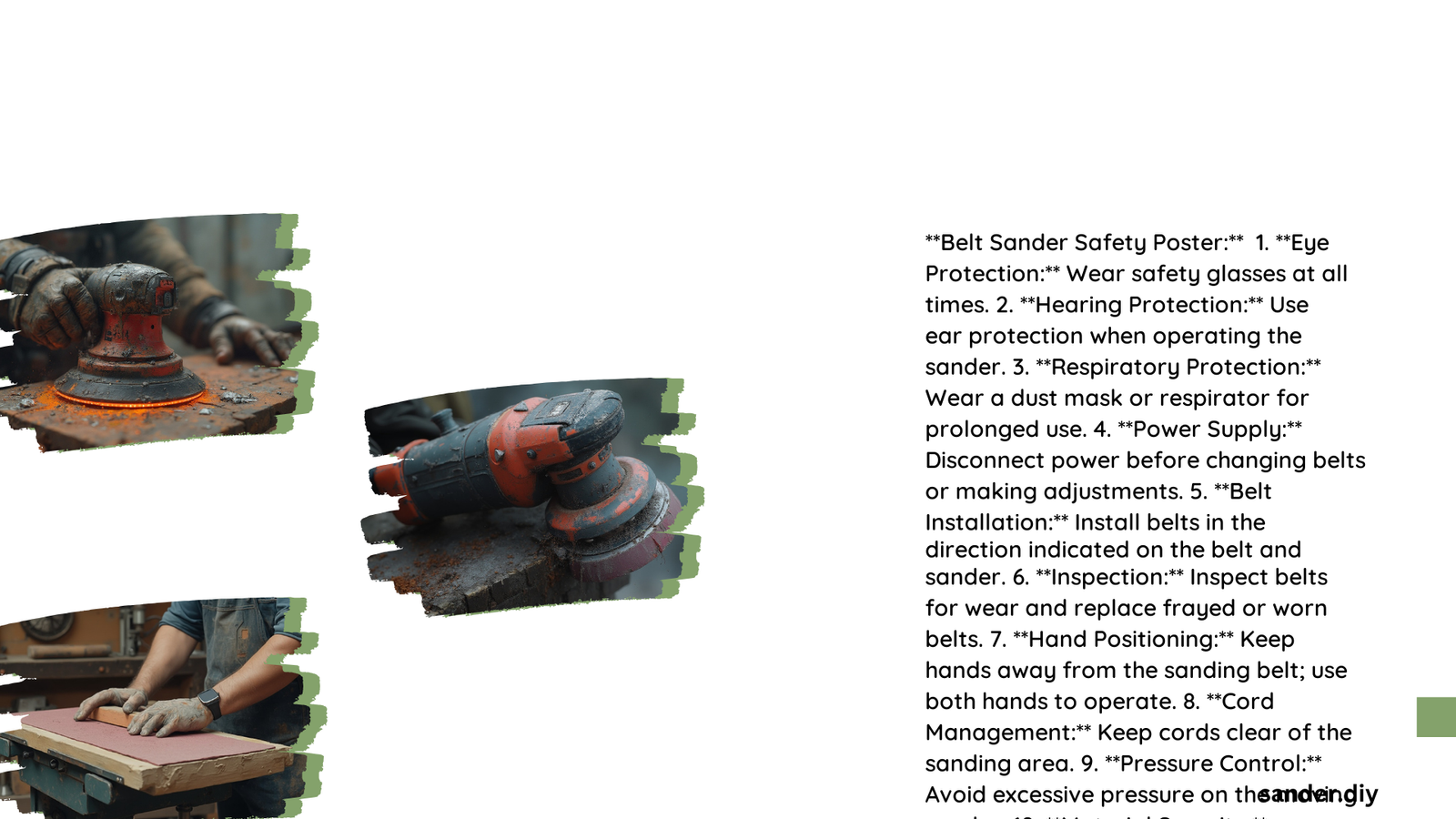A belt sander safety poster serves as a critical visual guide for workers, highlighting essential protective measures, operational protocols, and potential hazards associated with power tool usage. This comprehensive resource aims to minimize workplace accidents by providing clear, concise instructions on proper equipment handling, personal protective equipment (PPE), and risk mitigation strategies for professionals and DIY enthusiasts.
What Are the Primary Risks Associated with Belt Sanders?
Belt sanders present multiple potential hazards that workers must understand to ensure safe operation. These risks include:
- Mechanical Injuries: Potential for cuts, abrasions, and entanglement
- Dust Exposure: Respiratory risks from material particulates
- Electrical Hazards: Potential shock or equipment malfunction
- Projectile Dangers: Risk of material or belt fragment ejection
How Can Workers Protect Themselves?
Personal Protective Equipment (PPE) Requirements
| PPE Category | Specific Recommendation | Protection Level |
|---|---|---|
| Eye Protection | ANSI Z87.1 safety glasses | High |
| Hearing Protection | NRR 25+ decibel rating | Moderate |
| Respiratory Protection | N95 or higher dust mask | High |
| Hand Protection | Cut-resistant gloves (Level 5) | High |
Critical Safety Protocols
Workers must adhere to strict operational guidelines to minimize accident risks:
- Pre-Operation Inspection
- Check sanding belt for wear or damage
- Verify all safety guards are intact
-
Inspect power cord for potential electrical risks
-
Operational Best Practices
- Maintain stable body positioning
- Use two-handed operation technique
- Apply consistent, moderate pressure
- Secure workpiece before sanding
What Technical Specifications Impact Safety?
Belt sanders vary in design and functionality, with safety considerations including:
- Power Rating: Higher wattage requires more careful handling
- Belt Speed: Faster speeds increase potential injury risks
- Material Compatibility: Different materials demand specific sanding techniques
How to Develop an Effective Belt Sander Safety Poster?
An ideal belt sander safety poster should:
- Use high-contrast, readable graphics
- Include clear, concise instructional text
- Demonstrate proper and improper techniques
- Highlight potential injury mechanisms
- Provide emergency contact information
What Training Components Enhance Safety Understanding?
Comprehensive safety training should encompass:
- Hands-on equipment demonstration
- Interactive risk assessment scenarios
- Video-based learning modules
- Regular safety refresher courses
- Practical skill verification
Conclusion

A well-designed belt sander safety poster is more than a regulatory requirement—it’s a critical tool for preventing workplace injuries and promoting a culture of safety awareness.
